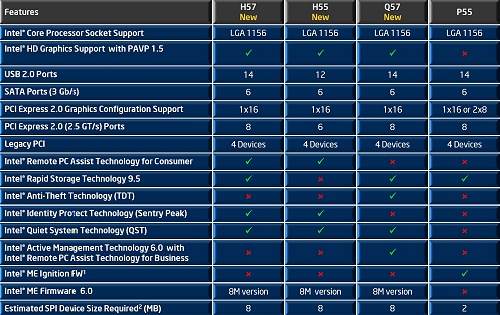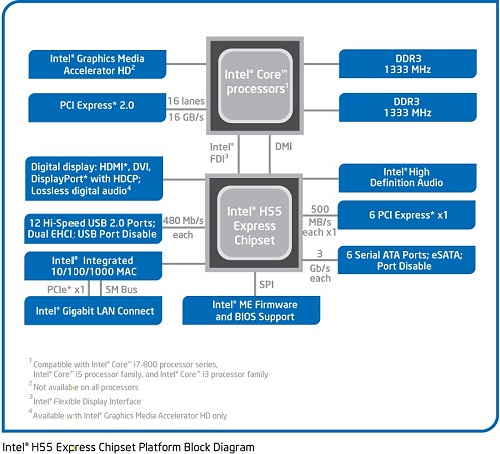The New Intel Chipsets
Current desktop Lynnfield processors use the LGA1156 socket, which is supported by the Intel P55 chipset. As mentioned before, the P55 chipset should still be able to support all the new 32nm processors without the ability to use the on-die GPU. In short, the P55 chipset supports six SATA 3.0 Gbit/s ports, fourteen USB 2.0 ports and eight PCI Express 2.0 lanes.

The new Intel chipsets include the H55, H57 and Q57 which are all quite similar in terms of specifications. All three offer six SATA 3.0 Gbit/s ports, while the H57 and Q57 boast eight PCI Express 2.0 lanes and fourteen USB 2.0 ports. The H55 looses a few USB 2.0 ports, supporting just twelve, and drops a few PCI Express 2.0 lanes for a total of six.

The only other differences between these new chipsets have to do with the features that they support. For example, the Intel Remote PC Assist Technology for Consumer is not supported by the Q57, while it is present in the H55 and H57. The Intel Rapid Storage Technology 9.5 is not supported by the H55 chipset, but it is by the H57 and Q57 chipsets.

Another feature called Intel Anti-Theft Technology (TDT) is only supported by the Q57 chipset, as is the Intel Active Management Technology 6.0 with Intel Remote PC Assist Technology for Business. Then finally a feature called Intel Identity Protect Technology (Sentry Peak) is only supported by the H57 and H55 chipsets.
